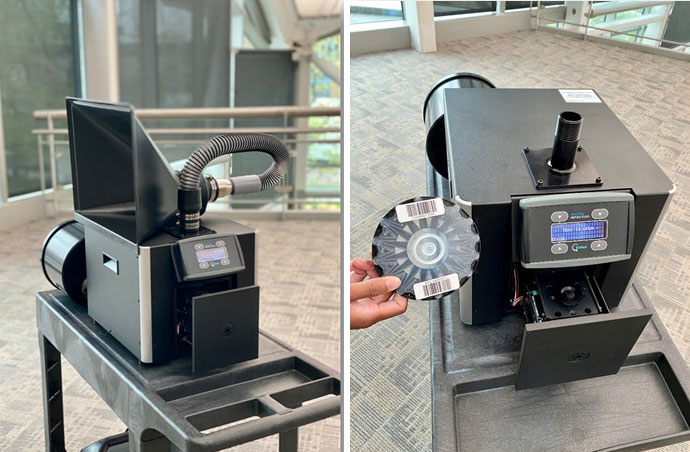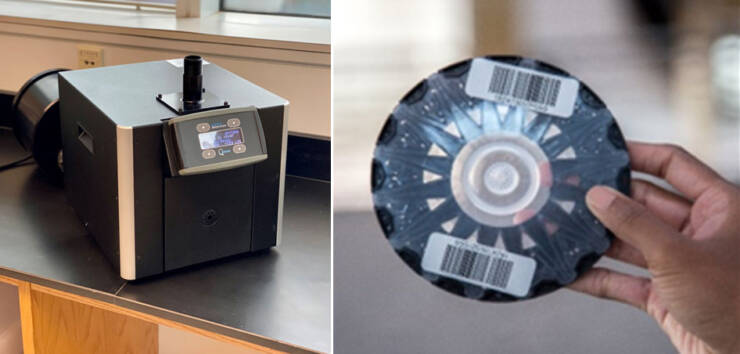
New Delhi. With the deadly Covid-19 virus continuing its death march across the world disrupting normal life and offices closed and sports coming to a halt, Smiths Detection, a global leader in threat detection and security screening technologies have come with a unique solution – BioFlash® Biological Identifier that’s capable of detecting airborne COVID-19, positioning the technology as an effective environmental monitoring tool for use in indoor public spaces. The BioFlash identifies aerosolised virus, at the detectable range generated via human shedding, in rooms where the presence of SARS-CoV-2 was also detected by environmental swabs. The BioFlash technology allows for onsite confirmation of these results in under three minutes.
The portable machine weighing about 19 kgs is a bio-aerosol collection and identification system. It uses CANARY™ technology along with proprietary aerosol collection techniques to provide a low-risk, cost-effective biological sampling and identification solution for environmental monitoring. It can be transported from one place to another and takes just two minutes to show results whether the virus is present in that particular place. The instrument is highly sensitive and provides protection by detecting the presence of the virus.
The BioFlash Biological Identifier provides rapid, sensitive and specific identification of various diseases and common bio threat agents. BioFlash® has also been proven to detect airborne SARS-CoV-2 by the United States Army Medical Research Institute of Infectious Diseases (USAMRIID). Apart from the existing pathogens detection capability BioFlash unit can be configured for additional Bio threats as well, should they arise in future, making the unit a great Bio threat detection investment for any organisation.
The high performance aerosol sampler of the BioFlash is portable, durable and capable of taking high sample volumes in short periods of time. These capabilities allow for both indoor applications, so air quality can be tested quickly and easily wherever you are. The BioFlash can also be configured as a stand-alone device, used in tiered detection architectures to include a trigger and confirmatory sampler, or as an integrated component subsystem.

The portable, compact and easy to use BioFlash Biological Identifier offers breakthrough capabilities in sampling performance. The BioFlash operates using Bio Disk consumables that contain genetically engineered biosensors, expressing both the agent-specific antibodies and the calcium-sensitive bioluminescent molecules that are needed to produce light emission. Each Bio Disk contains sixteen cuvettes with different agent-specific biosensors in specific cuvettes. This allows more than one agent of interest to be detected and identified.
The highly mobile, light weight machine collects ambient air and identifies the presence of SARS-CoV-2 viral particles. It can be used to confirm sanitation procedures are working properly before or after human occupation of a space or it can be used to monitor the air during human occupation to confirm.
“The BioFlash offers real-time, on the spot testing for COVID-19 in the air and be used as part of an organization’s COVID-19 mitigation strategies to help identify the presence of airborne COVID-19,” said Smiths Detection India’s Managing Director, Vikrant Trilokekar.
During a virtual demonstration hosted by Smiths Detection India’s Sales and Business Development Director, Pravin Surana, participants were given a demonstration of BioFlash; and given an overview of how the instrument works and how it can help to detect the presence of the virus in enclosed spaces like conference halls, sports locker rooms, class rooms in schools, colleges and universities.
It was felt that the BioFlash was a good fit for India and cost effective. It could be taken up for indigenous production under the government’s Atmanirbhar Bharat scheme for mass production considering the huge market potential in Indian subcontinent.








